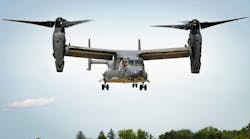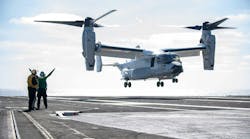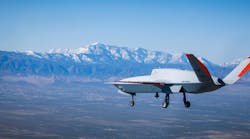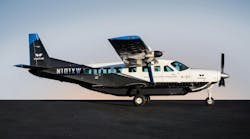Nov. 11--IRUMA AIR BASE, Japan -- Tucked inside a hangar behind one of this country's best aviation museums is a sight few people get to see: The first aircraft to fly above Japan.
The Henry Farman biplane and a kamikaze glider are among the many highlights at the hangar and museum on the Japan Air Self-Defense Force's Iruma Air Base northwest of Tokyo. But the facilities are used primarily as an educational resource by JASDF, so two Stars and Stripes staffers had the place to themselves on a recent fall day.
Iruma's history dates back to the 1930s, when Japan's air force academy was established there and Emperor Hirohito attended graduation commencements. U.S. forces took control of Japan's military installations after World War II and renamed it Johnson Air Base. It reverted to Iruma in the 1970s when it was returned to Japan.
All of this rich, intertwined history is covered within the aviation museum, called Shubudai Memorial Hall.
The 1903 Wright Flyer, the first motor-powered aircraft to carry a human in free flight, is considered the centerpiece of the Smithsonian National Air and Space Museum, visited by more than 8 million people a year.
Only seven years after the Wright brothers traded turns flying at Kitty Hawk, N.C., Yoshitoshi Tokugawa famously took Japan into the sky in 1910 above what is now Yoyogi Park in central Tokyo.
Tokugawa, a descendent of Japan's greatest Shogun, Tokugawa Ieyasu, purchased his aircraft in France and brought it back to fly as a newly commissioned pilot in the Japanese military.
Only the wheels and engine are originals, but the completely restored aircraft, resting on wooden framing that both displays and wheels it around, begs the same question as the Wright Flyer: How did a pilot dare to take this assemblage of wires, metal rods and taut fabric into the sky?
Face-to-face with the biplane in the same hangar is the first F-1 jet to be built and flown in Japan.
The camouflage F-1, with its distinctive red rising sun painted on each side and bomb arsenal attached for good measure, reminds visitors that similar to America, Japan's aviation history is tied to its military.
The two-story museum, which previously served as divisional headquarters for U.S. forces and reopened last year after a renovation, also has the only Ouka kamikaze glider in Japan, according to base officials.
Most people have heard of the kamikaze, but the exhibit is meticulous in its detail of how war developments--like the superiority of America's industrial might and its technologically advanced B-29 bomber -- led a desperate Japan to design the suicide glider.
When given attack orders, the engine-less Ouka -- "cherry blossom" in Japanese -- would be carried by a Mitsubishi bomber and released when its target was in sight.
The kamikaze pilot, wearing a honorific headband and carrying only a blade, would then use three solid fuel rockets -- each with an 11-second thrust -- to evade the likely anti-aircraft fire and point its nose-encased bomb toward an enemy ship. A direct hit was powerful enough to destroy almost any craft.
Pictures and books show that this Ouka was used as an outdoor landmark during the era of Johnson Air Base.
Around the corner is an intact engine from the famed Mitsubishi Zero fighter -- the World War II aircraft given much of the credit for the attack on Pearl Harbor.
The tactic of using fighters alone to destroy a fleet was unthinkable at the time and doesn't go without notice in the museum.
While there is no actual B-29 bomber on display, it still is one of the museum's American stars, with exhibits dedicated to crash remnants and maps of its impressive range.
The bomber was so lethal and unstoppable that special Japanese infantry units trained at Iruma with a life-size replica on how to approach and blow up the aircraft. The secret missions were meant to attack parked bombers on Okinawa, according to another museum exhibit, but were unsuccessful.
The last room on the second floor is dedicated to Johnson Air Base history, from the patches the pilots wore to the U.S. Forces Japan phone book used by military families on accompanied tours.
The expansive main showroom downstairs opens up to modern aviation warfare, with jet engines staggered on the left and a disarmed but very real Nike missile angled to the sky on the right.
There's a model F-15 that was used in Japan's version of "Top Gun," according to museum caretakers, and one length of the wall is lined with standing mannequins dressed in all the iterations of JASDF uniforms, past and present.
Including an introductory film, touring all of the museum's offerings can easily take three hours.
While the exhibits would be of interest to both Japanese and Americans, the museum is not optimized for English speakers. Iruma Air Base says the base is open to the public, although approval for a base tour is first required, and entrance to the museum is only possible if there is no scheduling conflict.
Paul Thompson, who maintains a website on Japan aviation, visited as part of a Japan Aviation Journalists' Association group visit in the summer. He ranks other Japanese general aviation museums higher but said they're all "significant in their own way."
And that restored biplane?
"It's a bit of a shame that it's stuck in the corner there," he said.
Stars and Stripes staffer Hana Kusumoto contributed to this report.
Twitter: @toshjohn
Copyright 2013 - Stars and Stripes




